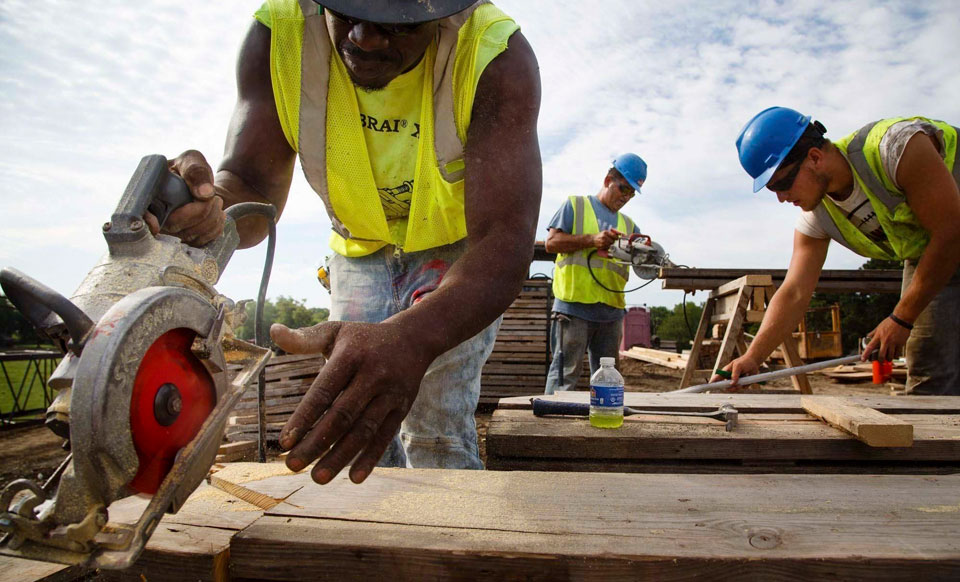
With the economy in recession and inflation soaring, it’s becoming more likely that the country is going to experience a very long and agonizing period of stagflation, with prices continuing to go up while unemployment increases as well, putting millions of Americans out of work with no means of support to pay for very basic, essential goods and services. The supply of goods and services available to consumers is going down while the demand for such products is going up. The traditional “treatment” for this economic condition is for the Federal Reserve Bank to raise interest rates so high that consumers will no longer have the means to pay credit for even the most basic necessities. The theory, based on historical practice, is that by downsizing the economy into recession, inflation will be reduced, even if it comes at the cost of millions of jobs, home foreclosures, high unemployment, and increased poverty.
There are viable alternatives to the traditional prescription of “root canal economics” to resolve the inflationary dilemma. Some leading experts have been advocating a tried and true method of stimulating the economy while reducing inflation at the same time. The model they use to accomplish this goal goes back more than 200 years to the early days of the Republic when Alexander Hamilton was Secretary of the Treasury in the administration of George Washington. At that time, a national bank was established by Congress to provide a safe depository for federal financial accounts, as well as to facilitate commerce and infrastructure improvements by leveraging federal assets to make loans for important projects that would benefit the nation’s economy.
The Bank of the United States, with its headquarters in Philadelphia, was hugely successful for a few decades in its mission to provide financing for internal improvements, especially in territories that were largely undeveloped. However, in its later years, there were allegations of mismanagement and corruption. Banks that were established in individual states were also jealous of the growing power and influence of a central bank. In the 1830s, during the administration of President Andrew Jackson, the federal deposits were withdrawn, and eventually the Bank and its assets were sold to a group of private investors.
In 1932, during the Great Depression, a new national bank for infrastructure, similar in some aspects to the Bank of the United States, was established by the administration of President Herbert Hoover. It became known as the Reconstruction Finance Corporation and, similar to its 19th century predecessor, was set up to provide much needed funding for public works and other improvements to the nation’s infrastructure. The RFC, an independent government agency 100% owned by the federal government, was capitalized by issuing bonds which were subsequently purchased by the Treasury Department, and later sold to the public.
When Franklin Roosevelt became president, he greatly expanded the RFC and its purpose to provide financial relief in the form of loans to states and local governments so that they might increase their own spending for public works and internal improvements. The sale of Treasury bonds to enable more capitalization of the RFC was also increased. Thanks to the RFC program during the 1930s, there was huge activity for improvements to the nation’s infrastructure, as well as funding through state, local agencies, and community banks to stimulate the economy in regions that were suffering the most. Another example of RFC initiatives was funding for the creation of the Federal National Mortgage Association, which assisted banks and independent mortgage brokers to assist homebuyers with financing that they would otherwise not be able to obtain. The emphasis on public improvements and infrastructure were guided by economic benefits for the entire country, not corporate profits divided between shareholders and investors.
Despite its enormous achievements, the RFC was discontinued in the 1950s. Since that time, there have been various federal programs to allocate direct funding for “shovel-ready” public works and improvements to infrastructure. This occurred notably in the first years of the Clinton administration as well as the Obama administration. More recently, Congress passed a trillion-dollar bill to pay for infrastructure and other improvements which would benefit the national economy. However, these are not lasting solutions for maintaining an effective infrastructure to support the national economy.
In response to extreme demands on the nation’s infrastructure from the pandemic, wars, climate issues, and various other crises, including interruptions affecting the domestic supply chain, as well as the inflationary pressures on consumers and producers, several groups have called on Congress to come up with a permanent solution to the demands on infrastructure and other supply chain issues. Last year, the National Infrastructure Bank Act was introduced in the House of Representatives to provide a permanent solution to inflation and related supply-side issues as well as improving and maintaining the national infrastructure.
The National Infrastructure Bank as proposed to Congress would be an independent agency, like the U.S Postal Service, operating entirely by authority of Congress under the supervision and control of the federal government. The bank will obtain its funding from the sale of preferred shares in exchange for U.S. Treasury bonds. The preferred shares have a set return with no voting or control over the bank. The Treasury bonds will serve as collateral for loans to state and local governments to pay for improvements to existing infrastructure and create new infrastructure, expand public works, and provide for other internal improvements that will create millions of jobs, increase the supply of goods and services, and reduce inflation while stimulating economic growth.
Like the Postal Service, the bank would be managed by a Board of Directors who would be responsible to Congress and the executive branch; they would not be accountable to shareholders and investors. The bank will have a directed mission to provide funding to states and local governments for approved public works and infrastructure improvements. Funding for projects will support specific improvements in areas that benefit the public, including but not limited to transportation, water projects, environmental improvements, internet access, affordable housing, and many more areas of concern.
The bank would also have to consider the environmental impact of any project it agrees to fund, as well as making sure that there is diversity in all communities which benefit from its funding. The bank will also be directed to ensure that there is diversity and inclusion in any workforce contractors and employees. Projects funded by the bank will be required to make sure that workers have full protection of labor rules and regulations, and that workers on any project must receive prevailing wages as well as comprehensive health, retirement, and other benefits.
The proposal for a National Infrastructure Bank has received widespread support from advocacy groups and activist organizations, as well as academic experts and elected officials from all levels of government. The bill was introduced by Congressman Danny Davis last year and has more than a dozen co-sponsors, while other members of Congress have expressed their support for the original bill as well as other similar proposals. Several state legislatures and municipal governing bodies have already passed resolutions endorsing the bank proposal. Labor unions, especially those in the building and construction trades, are very supportive, as they anticipate the bank will provide limitless billions of dollars for infrastructure projects that will greatly benefit their members. Many state and local government entities are also enthusiastic at the prospect of borrowing funds for local projects without the necessity of going to Wall Street and obtaining financing at much higher interest rates.
The Inflation Reduction Act recently passed by Congress takes an important first step in providing funding for infrastructure, environmental, and public improvements. But it is only a first step and does not go nearly far enough to provide a permanent solution for supply-side funding and internal improvements to infrastructure. The National Infrastructure Bank of the United States would provide such a remedy as based on and modeled after the first Bank of the United States in the 19th century and the Reconstruction Finance Corporation in the 20th century. Alexander Hamilton and Franklin Roosevelt have shown us the way to how a national bank can be successful in achieving national goals of economic growth and prosperity.










